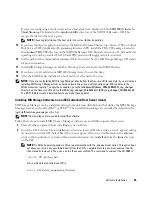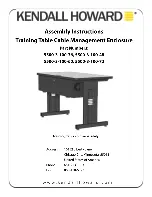
10
Hardware Installation
Cabling the Enclosure
You can connect up to 16 hosts and two expansion enclosures to the storage array.
To plan your configuration, complete the following tasks:
1
Evaluate your data storage needs and administrative requirements.
2
Determine your hardware capabilities and how you plan to organize your data.
3
Calculate your requirements for the availability of your data.
4
Determine how you plan to back up your data.
The iSCSI interface provides many versatile host-to-controller configurations. For the purposes of this
manual, the most conventional topologies are described. The figures in this chapter are grouped
according to the following general categories:
•
Direct-attached solutions
•
Network-attached (SAN) solutions
Redundancy vs. Nonredundancy
Nonredundant configurations
, configurations that provide only a single data path from a host to the
RAID enclosure, are recommended only for non-critical data storage. Path failure from a failed or
removed cable, a failed NIC, or a failed or removed RAID controller module results in loss of host access
to storage on the RAID enclosure.
Redundancy
is established by installing separate data paths between the host and the storage array, in
which each path is to different RAID controller modules. Redundancy protects the host from losing
access to data in the event of path failure, because both RAID controllers can access all the disks in the
storage array.
Direct-Attached Solutions
You can cable from the Ethernet ports of your host servers directly to your MD3000i RAID controller
iSCSI ports. Direct attachments support single path configurations (for up to four servers) and dual path
data configurations (for up to two servers) for both single and dual controller modules.
Single Path Data Configurations
With a single path configuration, a group of heterogeneous clients can be connected to the MD3000i
RAID controller through a single physical Ethernet port. Because there is only the single port, there is no
redundancy (although each iSCSI portal supports multiple connections). This configuration is
supported for both single controller and dual controller modes.
Figure 2-1 and Figure 2-2 show the supported nonredundant cabling configurations to MD3000i RAID
controller modules using the single path data configuration. Figure 2-1 shows a single controller array
configuration. Figure 2-2 shows how four standalone servers are supported in a dual controller array
configuration.
Summary of Contents for PowerVault MD3000i
Page 6: ...6 Contents ...











































